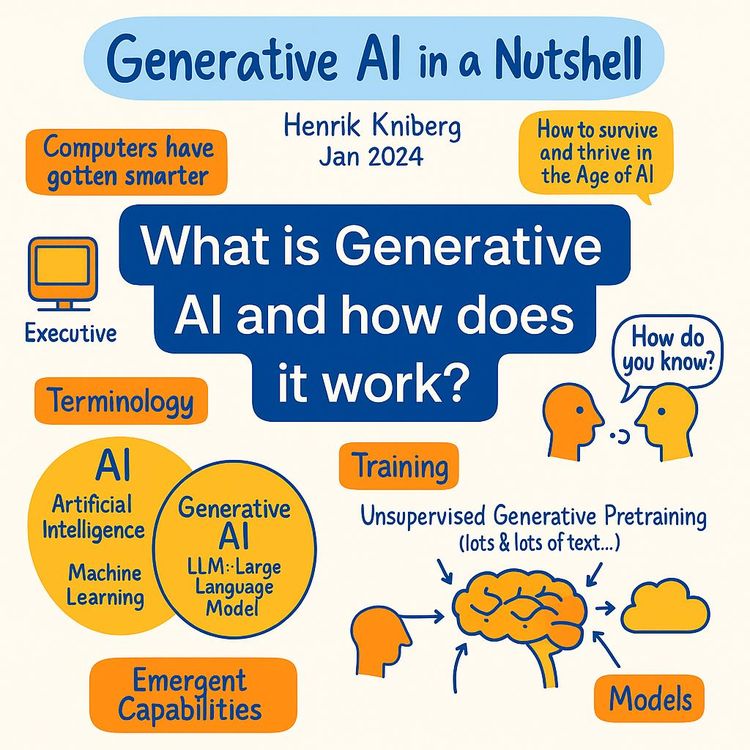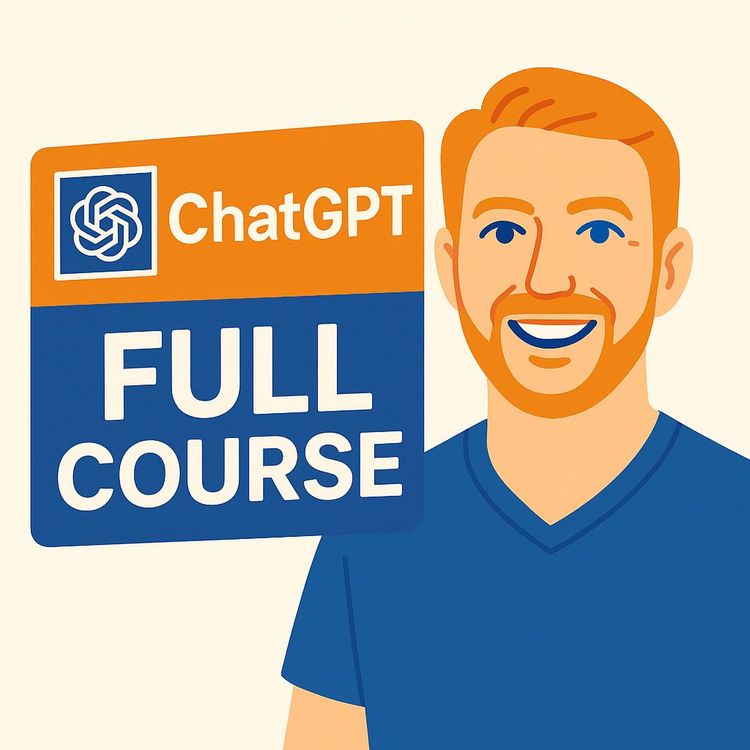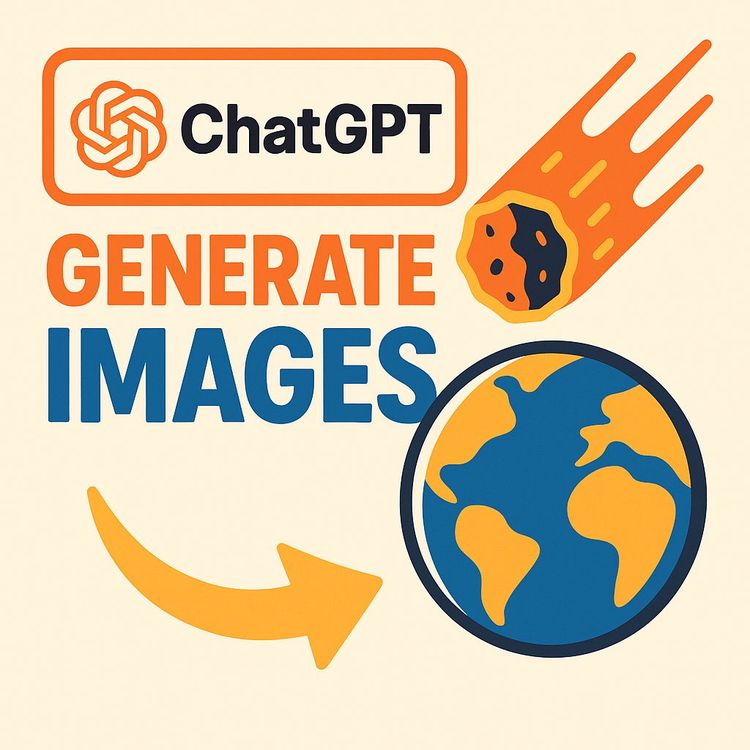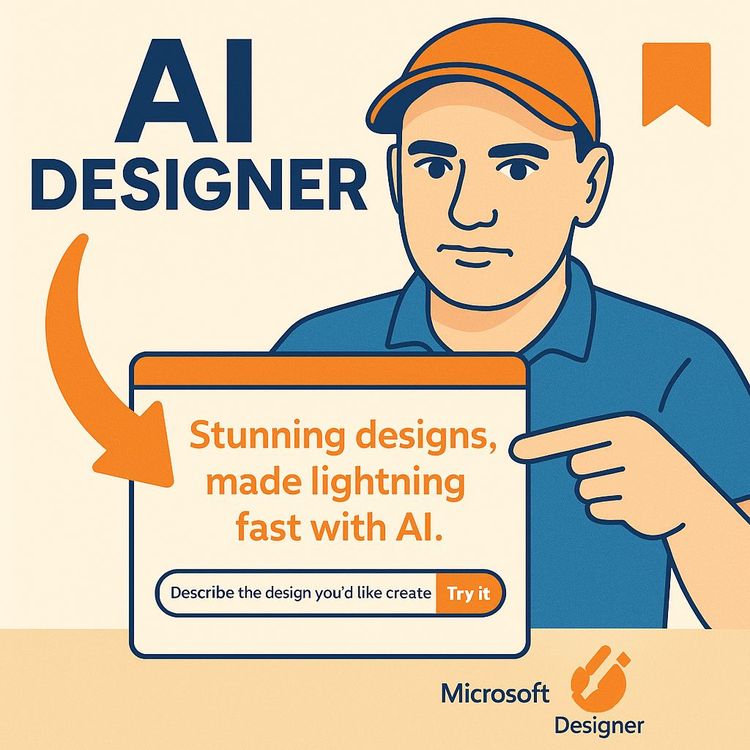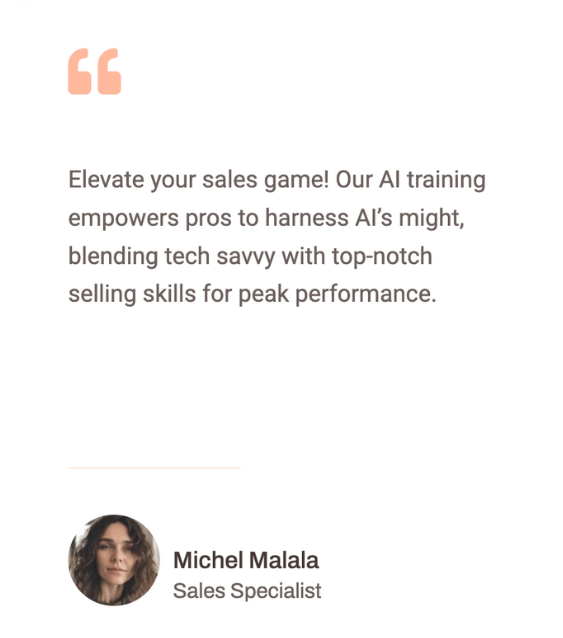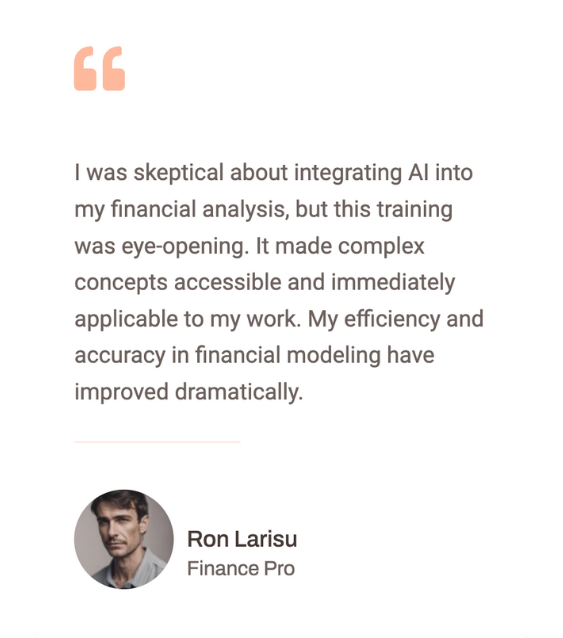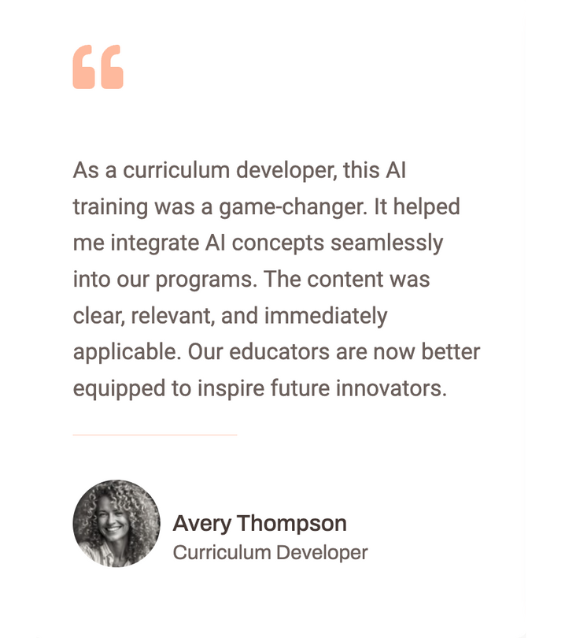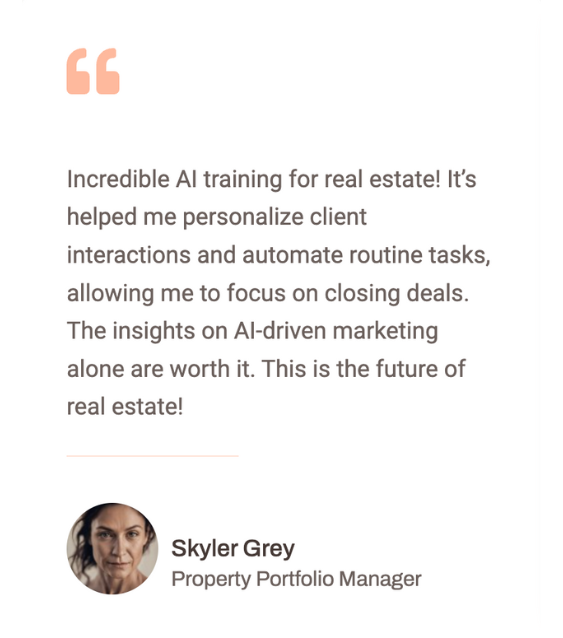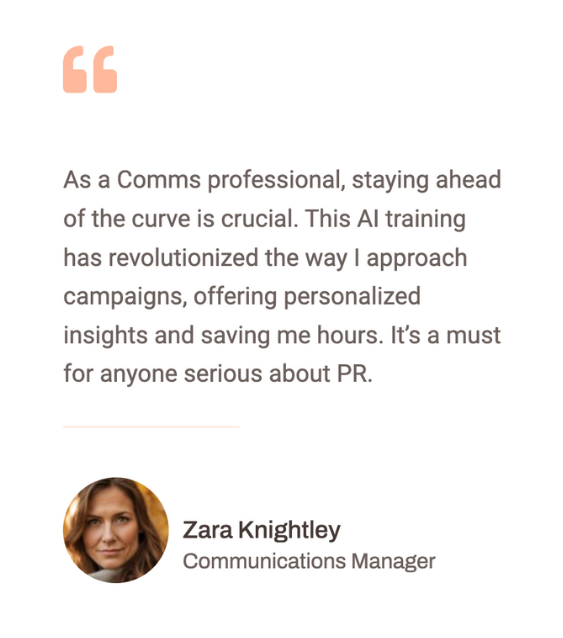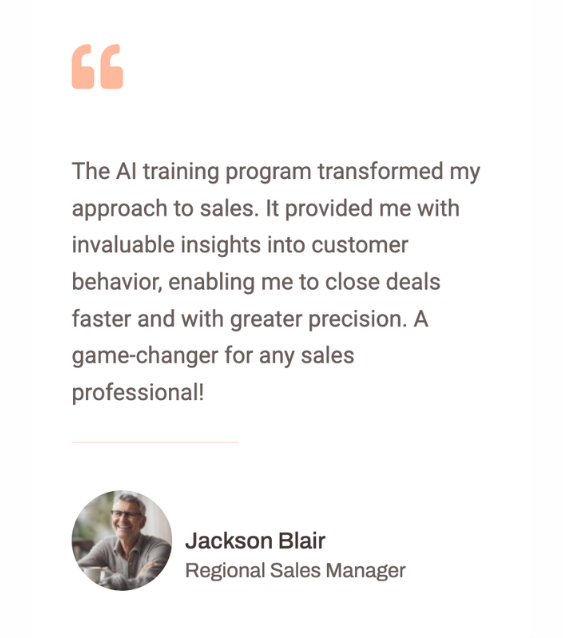ComfyUI: Create Hyperrealistic, Consistent AI Characters (Free) (Video Course)
Turn a single photo into a hyperreal, consistent character you can reuse across images and video,locally, for free. Get hands-on with ComfyUI, smart dataset building, upscaling, and fast LoRA training so your shots match, scene after scene.
Related Certification: Certification in Creating Hyperrealistic, Consistent AI Characters with ComfyUI
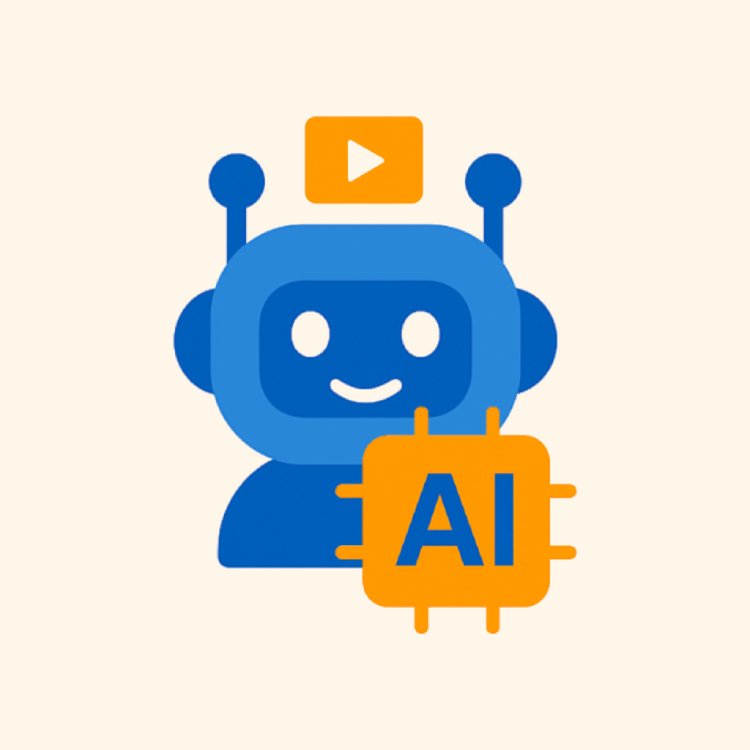
Also includes Access to All:
What You Will Learn
- Build a ComfyUI pipeline that bootstraps a diverse dataset from one reference image
- Upscale and refine images with Flux + Yuzo and generate training captions
- Train a custom LoRA in AI Toolkit to lock in your character's identity
- Generate consistent images and videos with one-2-2 and cinematic post-processing
- Optimize for consumer GPUs using GGUF formats and Light X speed LoRAs
- Troubleshoot common issues (identity drift, plastic skin, hands) and iterate datasets
Study Guide
Introduction: Why This Masterclass Matters
You can generate a great single image with almost any model. The real challenge is making that same character look like themselves across poses, outfits, scenes, and even motion. That's what this course solves, end to end. We'll build a free, local pipeline in ComfyUI that turns one reference image into a hyperrealistic, consistent character you can drop into images and videos at will.
Here's the big arc: we start from a single image, automatically produce a full dataset of the character (turnarounds, poses, expressions, try-ons), upscale and refine that dataset so it looks believable, caption it so a model can learn the concept, train a custom LoRA that captures their identity, and finally generate images and videos with your LoRA inside a high-quality workflow. It's a system you can reuse for any character, any style, on consumer hardware. No subscription. No gatekeepers.
By the end, you'll have a custom character LoRA in your toolkit and a reliable workflow for building more. You'll also know how to push past the "AI look," how to prompt for cinematic results, and how to optimize speed without tanking quality.
What You'll Build (And How You'll Use It)
You'll create a custom character pipeline inside ComfyUI that:
- Bootstraps a full dataset from one input image with the Gwen image edit model.
- Refiners upscale the dataset with Flux + Yuzo for lifelike detail (especially skin and eyes).
- Automatically captions and prepares your data for training.
- Trains a LoRA that locks in your character's identity.
- Generates consistent images and videos with one-2-2, and optionally enhances realism with community LoRAs.
- Applies post-processing to make frames feel cinematic instead of synthetic.
This is valuable whether you're building a webcomic, pre-vis for a film, marketing assets, NPCs for a game, or a personal brand avatar that looks identical from post to post.
Key Concepts & Terminology (Plain English)
- ComfyUI: A node-based interface to chain models and processes together, visually. Think "LEGO for AI workflows."
- LoRA (Low-Rank Adaptation): A small add-on trained to teach a base model your specific character, style, or thing. It plugs in and out, so you don't retrain the whole base model.
- Trigger Word: A unique token you invent (like "charXYZ"). When included in prompts and captions, it tells the model "use the custom concept."
- Dataset: A folder of curated images and matching captions. Your LoRA learns from this. Better data = a better LoRA.
- Gwen image edit: An open-source model from Alibaba that edits and generates images from text and visuals. Great for pose transfer, try-on, and building out your dataset variety.
- one-2-2 / oneV2: Open-source models capable of both image and video generation. LoRAs trained for these models let you render consistent characters in motion.
- Upscaling: Increasing resolution and improving texture detail. Advanced upscalers can fix "plastic skin" and add realism.
- AI Toolkit: A training interface that removes the pain of command-line configs for LoRA training. Works well with cloud GPUs.
- GGUF: A compact model format that uses less VRAM. Great for running locally on consumer GPUs without a big quality loss.
Foundations: Tools You'll Use and Why
We'll build everything in ComfyUI because it's flexible, modular, and free. Your main generation engine for the dataset is the Gwen image edit model. It's instruction-friendly and handles image-guided edits well. For upscaling and realism, we'll stack Flux and Yuzo,together they transform that plastic vibe into actual pores, hair, eyes, and fabric texture. Your dataset will be captioned automatically with a language model, because captions teach the LoRA exactly what it's looking at.
Training happens with AI Toolkit. You can do it locally if you have a strong GPU, but cloud GPUs (like RunPod) are often faster and cheaper than upgrading your rig. Once trained, your LoRA is a lightweight .safetensors file you can plug into one-2-2 for images and video. Want hyperreal? Add community LoRAs like Lenovo Ultra Real and Insta Real 2.2. Want speed? Load a Light X LoRA and slash your steps without wrecking quality.
Setup: Installing Everything Correctly
Follow these steps exactly to avoid the common headaches:
1) Install ComfyUI and the ComfyUI Manager. The Manager lets you discover and install required custom nodes directly from inside ComfyUI.
2) Install required custom nodes. Load the provided workflow or template; ComfyUI will flag missing nodes. Use the Manager to install them, then restart.
3) Download models and place them under ComfyUI/models in the correct subfolders. You'll need:
- Gwen image edit (use a GGUF variant if you're low on VRAM).
- Upscalers (for example, 4x-UltraSharp) and the Flux + Yuzo models for refinement.
- Any optional helper LoRAs you plan to use (Lenovo Ultra Real, Insta Real 2.2, Light X).
4) Verify models are recognized. In ComfyUI, check the Load Model nodes to ensure the models appear in dropdowns.
5) VRAM reality check. If you're on a consumer GPU, GGUF formats help you run more with less. There's a minor quality tradeoff, but the workflow remains strong.
Example:
Place base checkpoints in the "checkpoints" subfolder, LoRAs in "loras," and upscalers in "upscale_models" (names may vary by node pack; follow node instructions). If a node can't find a model, double-check the path and filename.
Example:
If your GPU has 8-12GB VRAM, prefer GGUF where available and keep preview image batch sizes low. You can always upscale later for quality.
Phase 1: Automated Dataset Generation (From One Image to Many)
This is where you turn a single reference image into a full, varied dataset,consistent in identity but diverse in views, poses, and outfits.
Inputs and naming:
- Drop one clear image of your character into the Load Image node. Any style works,photo, 3D, anime,but the cleaner the input, the easier the pipeline.
- Pick a unique trigger word, like "charMILA." This becomes your LoRA activation token and the folder name for outputs. Use something you'll remember and that won't appear in normal language.
Core generation you'll automate:
- Character turnaround sheets: front, side, back. These stabilize the model's understanding of body shape and hair volume.
- Varied poses: walking, sitting, running, kneeling, lying down, casual standing,ideally full body.
- Facial expressions: happy, sad, angry, neutral, surprised, focused, laughing,close-up portraits.
- Virtual try-on: swap clothing by feeding a garment reference image; the model maps it to your character.
- Pose transfer: take the pose from a reference photo and apply it to your character while keeping identity consistent.
All outputs save to a folder named with your trigger word. Keep this tidy; it becomes your raw dataset bin.
Example:
Start with a studio-lit portrait. Generate: (1) a 3-view turnaround, (2) five full-body poses (walk, run, sit on stool, lean on wall, cross arms), (3) five expressions (neutral, laugh, stern, surprised, smirk), (4) a pose transfer from a dance shot you found, and (5) a try-on with a gray trench coat reference. That gives you 12-20 useful images instantly.
Example:
If your input is stylized (anime), still run the same groups. You'll get a cohesive anime dataset. Later, you can mix realism LoRAs to push toward photoreal while retaining identity.
Phase 1 Tips: Quality In, Quality Out
- Use high-contrast, in-focus inputs. Clean backgrounds help the edit model lock onto the subject.
- Avoid heavy makeup or occlusions (masks, sunglasses) for your first dataset. You can add them later with the trained LoRA.
- Keep the character's hairstyle and color consistent across the first pass. Variety in clothes is great; identity anchors should stay stable at the start.
- For pose transfer, pick references with clear limb separation and visible hands.
Phase 2: Dataset Refinement and Upscaling (Realism Pass)
Your raw dataset is good, but not training-ready. Now you'll upscale, fix textures, and caption everything so the model learns correctly.
Automated captioning:
- Load all Phase 1 images into the caption pipeline. A language model generates detailed captions that describe pose, clothing, lighting, and background. Your trigger word is automatically included in each caption so the LoRA learns to associate that token with this exact character.
- Check a few captions to ensure they're accurate and consistently include the trigger word.
High-fidelity upscaling (Flux + Yuzo):
- Upscale to a higher resolution (for example, around 2K on the long side). Flux elevates structure and detail; Yuzo adds consistency and improves skin texture. Together they reduce the plastic look and add believable microdetail to skin, eyes, eyebrows, hair, and fabric.
- Tune "start at step" to control how much the upscaler alters the source. Higher keeps more of the original; lower allows more creative refinement.
Suggested "start at step" tuning:
- High value (e.g., 18/20): Minor changes, preserves identity and composition closely.
- Lower value (e.g., 12/20): Adds more detail and can correct subtle issues, but watch for drift.
Final outputs:
- A folder of upscaled images with same-named .txt caption files. This is your training-ready dataset.
Example:
Take a 768×1024 portrait with plastic skin. After Flux + Yuzo at 2K with start-at-step 18, pores show up, tiny flyaway hairs appear, eyes sharpen, and fabrics look woven instead of painted.
Example:
Have a walking pose where shoes look mushy? Upscaling lifts laces, tread texture, and edge contrast,plus fixes minor hand distortions that slipped through in Phase 1.
Phase 2.5: Curation,The Secret Multiplier
This is where pros win. Training on a small, clean set beats training on a huge messy one. Before you upload to AI Toolkit:
- Remove off-model frames (weird hands, distortions, face drift).
- De-duplicate near-identical shots. Keep the best in each cluster.
- Prioritize coverage of angles, outfits, expressions, environments.
- Keep 20-30 exceptional images to start. You can add more later.
Organize by naming patterns or subfolders if your tool supports it. Simple beats clever here,fewer distractions, faster training.
Example:
From 120 generated frames, keep 28 bangers: 6 close-up expressions, 12 full-body poses, 5 turnarounds, 5 try-ons. You've got variety, angles, and clarity.
Example:
If two images are almost identical, pick the one with better eyes, cleaner edges, and clearer background separation.
Phase 3: LoRA Training for Ultimate Consistency
Now we teach a base model exactly who your character is. You can train locally, but if your GPU is mid-tier, cloud GPUs are often faster and more cost-effective for this step.
Local vs cloud trade-offs:
- Local: No ongoing cost, but you need plenty of VRAM and patience. Training for large models can require low-VRAM modes and long runtimes.
- Cloud (e.g., RunPod): Pay per hour, scale up instantly, and finish faster. Often cheaper than buying new hardware.
Training with AI Toolkit (recommended workflow):
1) Deploy AI Toolkit on a cloud GPU. The interface launches in your browser.
2) Create a new dataset and upload your upscaled images and their .txt captions.
3) Curate again inside the tool if needed. Delete anything off-model. Quality beats quantity.
4) Create a new training job:
- Base model: Choose one-2-1 (or oneV2.1) for broad compatibility; LoRAs trained here usually work well with one-2-2 too.
- Steps and sampling frequency: Save checkpoints frequently (e.g., every few hundred steps) so you can compare versions.
- Sample prompts: Include your trigger word so you can monitor likeness across checkpoints.
5) Run training and monitor samples. Download the final LoRA .safetensors plus one or two earlier checkpoints (sometimes mid-training looks best).
Parameter guidance (so you're not guessing):
- Image size: Train at or near your upscaled resolution ratio (e.g., 1024 on the long side), but don't exceed your GPU capacity.
- Learning rate and rank: Start with defaults in AI Toolkit; adjust only if you see overfit (too stylized, over-triggered) or underfit (no identity).
- Repeats: Enough passes to learn the face and body, not so many that it memorizes poses.
Example:
Train on 26 images at 1024px long-side, checkpoint every 500 steps, total steps 4-8k. Evaluate likeness at each checkpoint using the same three test prompts: close-up portrait, full-body neutral pose, and action pose.
Example:
If the LoRA starts overfitting (every output looks like the same close-up), reduce repeats, add more full-body shots to the dataset, and consider lowering learning rate slightly.
Phase 4: Image and Video Generation with Your Custom LoRA
Your LoRA is ready. Now you'll plug it into a one-2-2 workflow to create consistent images and videos.
Load the LoRA correctly:
- Insert your character LoRA in both the high-noise and low-noise model branches (as required by your workflow).
- Set a reasonable LoRA strength (start moderate; adjust if identity feels weak or overpowering).
Boost realism if desired:
- Load helper LoRAs like Lenovo Ultra Real and Insta Real 2.2 for photoreal touches.
- These stack with your character LoRA; balance strengths so the character identity remains dominant.
Create an effective prompt:
- Always include your trigger word.
- Describe face, hair, outfit, scene, and lighting clearly.
- Call helper LoRAs with their activation tokens if needed (e.g., "insta real," "lenovo").
- Use negative prompts to avoid common artifacts (e.g., extra fingers, warped eyes).
Post-processing for the "shot on camera" feel:
- Chromatic aberration: Subtle color separation in corners for a lens-imperfect vibe.
- Sharpening: Slight clarity bump, especially after resizing.
- Bloom: A gentle glow around highlights for a cinematic glow.
- Film grain: Fine, low-contrast noise to break digital perfection.
Speed optimization with Light X LoRAs:
- Load a Light X LoRA and drop steps from ~30 to as low as ~8.
- Set CFG to 1 in many Light X workflows (follow the included node advice).
- Expect generation time cuts of over 60% with minimal quality loss.
Example:
Prompt: "charMILA, candid street portrait, golden hour rim light, soft key from the right, shallow depth of field, 50mm lens look, wearing a gray trench coat, hands in pockets, city bokeh in background, insta real, lenovo." Add a touch of bloom and grain at the end.
Example:
Prompt: "charMILA full body, athletic pose mid-sprint, overcast softbox lighting, wet asphalt reflections, motion blur subtle, detailed running shoes, insta real." Add sharpening and a hint of chromatic aberration to mimic real glass.
Video Generation with one-2-2
Turn the same workflow into a video maker:
- Increase frame_length to the desired clip duration (e.g., around 41 frames for a short shot).
- Replace your Save Image node with a Video Combine node.
- Write a motion-centered prompt (camera moves, subject actions).
- Keep your trigger word in the prompt so identity remains stable frame to frame.
Direction tips for better motion:
- Use simple camera moves: slow dolly in, slight pan, gentle rack focus (described in text).
- Give the subject an easy action: head turn, step forward, hair movement in wind, glance to camera.
- Keep lighting steady across the clip for consistency.
Example:
"slow dolly in from waist-up of charMILA, turns her head to camera, soft window light left, hair moving slightly, shallow depth of field, city background bokeh."
Example:
"charMILA walking across frame left to right, medium shot, handheld micro-shake, cloudy day, light rain, reflective pavement, subtle motion blur on legs."
Prompt Recipes That Just Work
Portrait realism:
- "charMILA, tight portrait, natural skin texture, soft Rembrandt light, 85mm lens compression, catchlights in eyes, neutral expression, clean studio backdrop, insta real, lenovo."
Full-body fashion:
- "charMILA full body, minimalist studio, seamless white, dramatic side light, wearing a structured blazer and wide-leg trousers, crisp fabric detail, subtle shadow on floor, insta real."
Action and sports:
- "charMILA, dynamic leap in mid-air, bright gym lighting, sharp sneaker detail, sweat beads visible, motion trail subtle, high shutter look."
Story moment:
- "charMILA sitting on a train by the window, moody interior light, reflections on glass, rain outside, lost in thought, shallow DOF."
Post-Processing: Subtle Is Strong
Treat post like real-world colorists and finishers do,small nudges, not sledgehammers.
- Chromatic aberration: 0.2-0.5px edge separation is enough. Too much looks fake.
- Sharpening: Light pass after any downscale to maintain crispness without halos.
- Bloom: Apply only where highlights exist. Keep thresholds realistic.
- Film grain: Fine, low-opacity grain avoids banding and adds texture cohesion.
Example:
A flat portrait pops with a 5-10% bloom on highlights, 0.3px chroma aberration, and a subtle grain pass. Suddenly it feels like it went through a lens.
Example:
A night street scene gains credibility with minimal sharpening and grain,textures unify, and color noise from the model looks intentional.
Why Upscaling Is Non-Negotiable
The difference between "AI-ish" and believable often lives in the skin and eyes. The Flux + Yuzo combo isn't just resizing; it's reconstructing microdetail and improving consistency while preserving identity. This step is essential for training and final outputs alike.
Example:
Flux + Yuzo fixes over-smoothed cheeks and eyebrow mush, turning them into natural pores and hair strands. Eyes become reflective without looking painted.
Example:
Cloth edges become crisp; small stitches and zipper teeth appear. Even if you don't notice them individually, your brain does.
Optimization and Performance
Time is a creative constraint. Here's how to move fast without sacrificing quality:
- Use GGUF to run bigger models on smaller GPUs. Expect a minor quality dip, but it keeps you moving locally.
- Light X LoRAs cut steps dramatically (for example, from around 30 to around 8) while keeping results strong. Many users report a drop in generation time of more than 65% with negligible quality loss (e.g., 162 seconds down to 53 seconds).
- Keep CFG low when using Light X (often 1) per the workflow notes.
- Save seeds for reproducibility when comparing prompts and settings.
Example:
For rapid ideation, do 512-768px previews at 8 steps with Light X. When you like a frame, upscale with Flux + Yuzo and finish with post.
Example:
Running on a mid-tier GPU? Keep batch size low, use GGUF models, and rely on the upscale stage for final sharpness and detail.
Troubleshooting: Rapid Fixes
Plastic skin persists:
- Lower the "start at step" a bit during upscale to allow more refinement.
- Add gentle film grain and lower sharpening; too much sharpening emphasizes the plastic look.
Identity drift (character doesn't quite look right):
- Strengthen the LoRA slightly or include more close-up expressions in the dataset.
- Make sure your trigger word is in the prompt and captions. Keep helper LoRAs at moderate strengths to avoid overpowering the identity.
Hands and fingers off:
- Include one or two clean hand-focused images in the dataset (not too many).
- Use pose transfer with a reference where hands are clearly visible and separated from the body.
Overfit look (every image same angle/expression):
- Reduce repeats or total steps.
- Diversify the dataset with more angles and body shots; remove redundant close-ups.
Weak activation (LoRA not kicking in):
- Verify the trigger word matches training captions exactly.
- Increase LoRA weight or add trigger earlier in the prompt.
Example:
If eyes keep warping in harsh lighting, add a few well-lit close-ups with accurate reflections to the dataset and retrain lightly.
Example:
If helper LoRAs override identity, reduce their strengths by 0.1-0.3 each and raise the character LoRA by the same total amount.
Applications You Can Deploy Immediately
Digital storytelling:
- Build a cast and produce visual narratives that stay consistent panel to panel.
- Generate character sheets for collaborators so everyone works from the same visual foundation.
Filmmaking and animation:
- Rapid pre-vis with stable character identity across scenes.
- Short animated loops for teasers and social content.
Game development:
- Concept art for NPCs, consistent marketing key art, and mood boards for environments featuring your character.
- Iterations on costumes and skins using virtual try-on groups.
Education and training:
- Student projects can cover the entire pipeline: dataset creation, refinement, training, and deployment.
- Sandbox environments with ComfyUI plus cloud GPU credits make it accessible to cohorts without high-end rigs.
Example:
An author builds a protagonist LoRA, then generates cover art, chapter illustrations, and promotional reels,all with the same face and vibe.
Example:
A startup creates a brand avatar, then makes weekly short videos and stills for social channels,consistent, on-message, and fast.
Recommendations for Different Users
Creative professionals:
- Build your dataset locally in ComfyUI and budget a small amount for cloud training on RunPod for speed and reliability.
- Maintain a character library of LoRAs to reuse across projects and clients.
Institutions:
- Provide pre-installed ComfyUI environments and cloud credits for AI Toolkit so learners can experience the full pipeline without hardware barriers.
- Encourage students to submit both datasets and trained LoRAs for evaluation.
Individual learners:
- Master dataset generation and upscaling locally first. Train once you can reliably produce clean, varied sets.
- Start with one character, do the full pipeline, then scale to more.
Security, Files, and Organization
- Keep your trigger words unique. Avoid normal language words to prevent accidental activation.
- Back up your dataset and your final LoRA checkpoints. Sometimes a mid-training checkpoint outperforms the last one.
- Maintain a simple folder structure: raw outputs, refined upscales + captions, training sets, final LoRAs, and test renders.
Example:
Folders: 01_raw_dataset, 02_refined_upscaled_captions, 03_training_sets, 04_loras, 05_renders. You'll thank yourself later.
Example:
Filename pattern: charMILA_pose01_frontwalk.png + charMILA_pose01_frontwalk.txt keeps pairs aligned.
Detailed Walkthrough: Start to Finish
1) Input and trigger setup:
- Load your best single image. Assign "charXYZ77" as the trigger. Confirm the workflow writes to an output folder with that name.
2) Generate dataset variety:
- Run turnaround, poses, expressions. Add at least one virtual try-on and one pose transfer. Aim for 20-40 solid outputs.
3) Refine and caption:
- Run captioning so every image gets a matching .txt file with your trigger word appended. Upscale everything at around 2K with Flux + Yuzo. Tune start-at-step to preserve identity while fixing texture.
4) Curate visibly:
- Open the folder and ruthlessly cut anything off-model or redundant. Keep 20-30 strong examples covering close-ups, full-bodies, angles, outfits, and some environment variety.
5) Train the LoRA:
- Upload to AI Toolkit. Choose one-2-1 (or oneV2.1) as the base. Save checkpoints frequently and include trigger words in the sample prompts.
- Train, monitor, and download final and mid-run LoRAs.
6) Generate with one-2-2:
- Load your character LoRA on both high-noise and low-noise branches. Add helper LoRAs if you want realism. Prompt with your trigger word, strong scene and lighting details, and optional helper tokens.
- Optimize speed with Light X (steps ~8, CFG ~1) for iterations. Upscale heroes, then add post-processing (bloom, grain, chromatic aberration, light sharpening).
7) Make video clips:
- Raise frame count, swap to Video Combine, add motion language to the prompt. Keep identity stable by repeating the trigger word and consistent lighting cues.
Example:
End-to-end time on a modest GPU: dataset generation in batches over an afternoon, refinement/upscaling in the evening, training overnight on cloud, and you're generating the next morning.
Example:
Second character build goes twice as fast because your nodes, folders, and habits are already set. The system compounds.
Common Edge Cases and Solutions
Stylized input but you want photo output:
- Train from stylized data, then during generation mix in realism LoRAs and use more literal photography prompts (lens, lighting, environment). Keep character LoRA weight slightly higher than realism LoRAs to maintain identity.
Photo input but you want stylized output:
- Reverse the above: use stylizing LoRAs as helpers and reduce realism LoRA weights. Prompt for painterly or anime terms explicitly.
Clothing gets messy in try-ons:
- Use clean reference photos on plain backgrounds. Avoid heavy folds that obscure shape.
- Include a few successful try-ons in the dataset so the LoRA learns garment behavior on the body.
Inconsistent eye color:
- Emphasize eye color in captions and prompts. Include multiple close-ups where iris color is obvious and consistent.
Example:
If you want freckles or a specific skin detail, include 2-3 close-ups that clearly show it in the refined dataset and call it out in captions.
Example:
Hair consistency improves when your dataset includes multiple angles under similar lighting, plus one or two controlled environment shots (plain background) for clarity.
Why This Open-Source Stack Works
- ComfyUI gives you full control and automation without a subscription.
- Gwen image edit generates a broad, useful dataset from one image.
- Flux + Yuzo upgrades realism, especially skin and hair, which most models struggle with out of the box.
- LoRA training locks your character in. Once trained, you can prompt them into any scene, any style, still or video.
- one-2-2 lets you keep identity in motion, not just stills.
- Light X LoRAs make iteration fast so you stay in flow.
Example:
Instead of fighting a closed platform's randomness, you iterate locally, fix issues in your dataset, and train again. The character obeys you because you built the data and the model.
Example:
Starting with one clear image, you can build a complete portfolio of consistent shots, product photos, and cinematic clips,all on your schedule, all from your machine.
Key Insights You Should Remember
- Open-source is viable. This pipeline rivals commercial tools and gives you more control.
- One image is enough to start. The dataset generator creates variety you can refine and train on.
- Upscaling is essential for realism. Flux + Yuzo shifts skin from plastic to plausible, with meaningful detail in eyes and brows.
- LoRA training is the consistency switch. Once trained, your character shows up right, regardless of prompt complexity or media type.
- Hardware isn't a wall. If training is heavy, spin up a cloud GPU for a few hours. It's often cheaper than buying a new card.
- Post-production is the last 10% that sells the shot. Subtle film grain, bloom, and chromatic aberration do more than you think.
Noteworthy Performance Notes
- High-res LoRA training is demanding. Even with strong GPUs, you may need low-VRAM modes locally, which slows runs. Cloud GPUs remove that friction.
- Light X LoRAs can reduce generation time by over 65% with minimal quality loss. Going from around 162 seconds to about 53 seconds per frame is common, freeing you to iterate faster.
- Flux + Yuzo isn't just pretty,it's functional. It improves the actual training signal by raising texture fidelity and lowering synthetic artifacts.
Practice: Cement the Skills
Example:
Multiple Choice: What's the main job of a character LoRA?
A) Upscale images to 4K
B) Install custom nodes in ComfyUI
C) Embed a specific character's likeness for consistent generation
D) Compress models into GGUF
Example:
Multiple Choice: What's a trigger word?
A) The name of the upscaler
B) A unique token in prompts/captions that activates your trained concept
C) A password for AI Toolkit
D) The ComfyUI workflow filename
Example:
Short Answer: Describe the two stages of the ComfyUI workflow before training. What does each do?
Example:
Short Answer: What do "Virtual Try-on" and "Pose Transfer" accomplish in dataset generation?
Example:
Discussion: Compare training locally vs on a cloud GPU. Consider cost, speed, and hardware limits.
Advanced Tips and Best Practices
Prompt engineering nuances:
- Treat prompts like a shot list. Subject, lens, light, action, environment.
- Negative prompts are a scalpel, not a hammer. Remove specific artifacts, not everything at once.
LoRA blending strategy:
- Start with your character LoRA at moderate strength (e.g., 0.7-0.9 depending on workflow), then layer realism LoRAs at 0.2-0.5. Adjust to taste.
- If identity weakens, drop realism weights first.
Dataset evolution:
- After your first training pass, identify weak spots (hands, profiles, specific expressions). Generate 5-10 targeted images, refine, and retrain a small update. Iterative improvement beats one giant run.
Example:
A second training round with five better hand shots fixes 80% of your hand issues across outputs.
Example:
Adding three clean profile shots stabilizes side views and ear shape dramatically.
Frequently Asked Questions
Can I train multiple characters?
- Yes. Give each a unique trigger word, keep datasets separate, and train separate LoRAs. You can even render them together later by including both trigger words in the prompt.
Will this work on a laptop GPU?
- Yes with constraints. Use GGUF models, keep batch sizes small, and rely on the upscale stage. Consider cloud training for the LoRA itself.
How many images do I need?
- A clean 20-30-image set can be enough if it's well-varied and high quality. More isn't always better.
What if my captions aren't great?
- Edit a few manually if they're way off. The key is: accurate subject description, pose, clothing, lighting, environment, plus the trigger word in each caption.
Checklist: Verify You Hit Every Step
- ComfyUI installed and custom nodes added via Manager.
- Models downloaded (Gwen image edit, upscalers, Flux + Yuzo, optional helper LoRAs) and placed in correct subfolders.
- Single input image selected and a unique trigger word chosen.
- Automated dataset generated: turnarounds, multiple poses, expressions, try-ons, pose transfers.
- Captions auto-generated with trigger word included.
- Upscaling with Flux + Yuzo to around 2K; start-at-step tuned for identity and detail.
- Dataset curated to 20-30 excellent images with matching .txt captions.
- AI Toolkit training set up on one-2-1 (or oneV2.1), checkpoints saved, and sample prompts include trigger word.
- LoRA downloaded (.safetensors), plus one or two earlier checkpoints.
- one-2-2 generation workflow configured with character LoRA in high/low noise branches; optional realism LoRAs added.
- Prompts crafted with scene, lighting, and camera language; negative prompts refined.
- Post-processing applied (chromatic aberration, sharpening, bloom, film grain) with a light touch.
- Light X LoRA used for fast iteration (steps reduced, CFG ~1).
- Video generation tested by raising frame count and using a Video Combine node.
Conclusion: Lock In Your Character, Unlock Your Output
You now have a complete system. One image in. A custom character model out. The steps are simple, but they stack: generate a varied dataset with Gwen image edit, refine and caption with Flux + Yuzo, train a LoRA with AI Toolkit, and deploy it in one-2-2 for both images and videos. You control identity, style, speed, and finish. And you can run it all without paying for a closed platform.
Here's what to remember: consistency doesn't come from luck,it comes from data and training. Upscaling and captioning make your dataset "training-grade." The LoRA is your identity lock. Post-processing makes frames believable. Light X gets you results fast enough to iterate like a creative, not an engineer.
Build your first character now. Then build a second. This pipeline compounds. Every pass improves your taste, your dataset curation, and your speed. When you own your workflow, you own your results.
Frequently Asked Questions
This FAQ is built to answer the questions that come up before, during, and after creating hyperrealistic, consistent AI characters with a free, local workflow in ComfyUI. It prioritizes practical steps, troubleshooting tips, and business-focused guidance,so you can move from concept to results without guesswork. Each answer is concise, actionable, and includes examples where useful.
What is the primary goal of this character creation workflow?
Goal: Create consistent, high-quality AI characters from a single image.
This workflow turns one reference image into a curated dataset, trains a lightweight LoRA model of your character, and uses it to generate images and videos with reliable likeness and styling. Consistency is the core focus,faces, hair, clothing, and proportions remain stable across poses and scenes.
Business example: A fashion brand can build a "house model" from a single shoot and render product catalogs, seasonal looks, and social assets at scale,without reshoots.
You'll automate dataset generation (turnarounds, expressions, full-body poses), upscale for realism, caption for training, and then fine-tune a LoRA. After that, you can create images and motion clips in any setting while keeping identity intact.
What is a LoRA and why is it important for character consistency?
LoRA: A small add-on that imprints your character into a base model.
A LoRA (Low-Rank Adaptation) is trained on your curated dataset to "teach" a base model your character's visual identity. It's lightweight, fast to apply, and reusable across compatible models.
Why it matters: Consistency. Once trained, your LoRA locks in facial structure, hair patterns, skin tone, clothing motifs, and other defining features. It reduces drift between generations and preserves likeness across new angles, lighting, and settings.
In practice: Add your trigger word to prompts and the model reliably renders that character,holding brand identity, influencer likeness (with consent), or a fictional persona steady across campaigns.
What is ComfyUI?
ComfyUI: A node-based interface for building custom AI pipelines.
ComfyUI lets you compose complex image and video workflows by connecting modular nodes. You can plug in models (base, LoRA, upscalers), control pre- and post-processing, and automate multi-step tasks like dataset creation, captioning, and training prep.
Key advantages: Transparency (you see every step), repeatability (save/reuse workflows), and extensibility (custom nodes for pose transfer, virtual try-on, etc.).
Example: A marketing team can standardize a "brand character → outfit → scene → export" pipeline, so anyone on the team can generate consistent assets on demand.
What is the Gwen image edit model?
Gwen image edit: Instruction-based editing with text and references.
Gwen is an open-source edit model capable of applying language-driven changes to images. In this workflow, it helps generate varied poses, clothing swaps (virtual try-on), and scene adjustments from your single reference image.
It's powerful for initial dataset expansion: you can quickly produce turnarounds, expressions, and pose variations that will later feed into LoRA training.
Example: "Apply the same character in a winter coat, three-quarter angle, soft window light" → Gwen adapts the base image and outputs training-ready variations.
How do I set up the character creation workflow in ComfyUI?
Three steps: Install ComfyUI, load the workflow, install custom nodes.
1) Install ComfyUI locally. 2) Drag-and-drop the provided workflow (.json) into ComfyUI. 3) Use ComfyUI Manager to "Install Missing Custom Nodes," then restart.
After that, follow the workflow's comment boxes to add required models. Tip:
- Keep your models in the paths shown in the comments (e.g., ComfyUI/models/...).
- After adding models, refresh the UI (R key) and pick them from node dropdowns.
Outcome: A ready-to-run pipeline for dataset generation, upscaling, captioning, and LoRA prep,fully local and repeatable.
How do I download and install the necessary models?
Use the workflow's yellow comment boxes for links and paths.
Each comment box names a model, provides a link, and shows the destination folder. Steps: copy the link, download, place in the specified subfolder (e.g., models/unet/ or models/upscale/), then refresh ComfyUI and select the file in the related node.
Best practices:
- Keep a "models_manifest.txt" noting file names and sources.
- Use consistent naming (model-name_version.safetensors) for clarity.
- Avoid duplicate versions; archive old files to a /models_archive folder.
This reduces confusion, speeds troubleshooting, and helps teams onboard faster.
What are GGUF model versions and which one should I choose?
GGUF compresses models to reduce VRAM and disk usage.
Quantized GGUF variants (e.g., Q5, Q8) trade a bit of quality for lower memory cost. Rule of thumb: pick the highest quality that fits your GPU comfortably. For many setups, Q5 is a balanced starting point.
If you experience slowdowns or out-of-memory errors, step down to a smaller quant while checking if quality remains acceptable.
Example: On a mid-range GPU, Q5 often runs smoothly. If you upgrade hardware later, switch to a higher-quality variant to gain detail and stability with the same workflow.
How do I generate an initial set of character images from a single picture?
Load your image, set a trigger word, run the workflow.
1) Drag your reference image into the input node. 2) Create a unique trigger word (e.g., zxchar_v1). 3) Adjust the base prompt (photorealistic, film still, studio light, etc.). 4) Click Queue/Run.
The workflow outputs: turnarounds (front/side/back), expressions, and full-body poses. Tip: Vary clothing and camera angles early,this feeds a richer dataset later.
Business case: Talent agencies can prototype talent decks by generating consistent character variations from a single headshot, saving casting time.
What is a "trigger word" and why is it so important?
The trigger word links your dataset to your LoRA and later prompts.
It's embedded into every caption during dataset creation, teaching the LoRA to respond to that specific token. It also names your output folder for clean organization.
Guidelines:
- Make it unique (avoid common words).
- Keep it short and memorable.
- Use the same exact spelling in training and generation.
Example: "acme_char_09" used consistently in captions and prompts yields a reliably callable character across models.
How can I apply specific clothing or poses to my character?
Use Virtual Try-On and Pose Transfer groups in the workflow.
Virtual Try-On: drop a clothing image (plain background if possible), then prompt "character wearing the gray winter coat." Pose Transfer: load a reference pose image; the node extracts and applies the pose to your character.
Tips:
- Keep clothing photos clean and well-lit for better mapping.
- For poses, pick full-body references with clear limb positions.
Real-world use: E-commerce teams can pre-visualize outfits on a brand character before sample production, speeding approvals.
How do I curate the generated images for my dataset?
Keep only varied, on-model, high-quality images.
After the first run, delete off-model faces, messy hands, and near-duplicates. If you want a fresh batch, change the trigger word (e.g., zxchar_v2) so outputs land in a clean folder.
Curation checklist:
- Variety (angles, lighting, expressions, outfits).
- Consistency (face shape, hairline, skin tone).
- Clarity (no compression, minimal artifacts).
Lean datasets work: 20-40 strong images can beat 200 mediocre ones.
What happens in the "Dataset Creation" step?
Automated captioning + high-resolution upscaling.
This stage pulls your selected images, writes descriptive captions that include your trigger word, and upscales to higher resolution for cleaner detail. Models like Flux and Yuzo add realism and reduce the plastic look.
Outcome: a structured, training-ready folder with paired image and .txt caption files.
Why it matters: Better captions + higher resolution improve LoRA learning, especially for skin, eyes, and fabric textures that define identity.
How can I control the amount of detail added during the upscaling process?
Tune the sampler's start_step to balance fidelity and change.
Lower start_step (e.g., 12-13 of 20) allows more creative detail. Higher start_step (e.g., 18 of 20) keeps the original intact with subtle refinements.
Workflow tip:
- For hero shots, use higher start_step to preserve likeness.
- For variety (hair strands, fabric micro-texture), lower start_step.
Test on 3-5 images first, then apply the winning setting across the batch to keep the dataset consistent.
Why train a custom LoRA instead of just using the Gwen image edit model directly?
LoRA delivers higher fidelity, reliability, and flexibility.
Gwen is great for generating variations, but a LoRA trained on your curated set will reproduce facial identity and key features with far greater consistency. It also works across compatible image and video models, not just within Gwen's workflow.
For production use,brand characters, episodic content, product imaging,LoRA = repeatable results and better control over the final look.
What tools are recommended for LoRA training?
AI Toolkit and Flux Gym cover most needs.
AI Toolkit: user-friendly, supports multiple base models (e.g., OneVideo), runs locally or on cloud GPUs. Good for image and video LoRAs. Flux Gym: focused trainer for the Flux model, lighter on VRAM and straightforward to use.
Pick based on your target model and hardware. Tip: If your GPU is tight on memory, start with Flux Gym; if you need video compatibility, AI Toolkit with OneVideo/oneV2 is a practical path.
What is the process for training a LoRA with AI Toolkit on RunPod?
Deploy, upload, configure, monitor, download.
1) Launch an AI Toolkit pod on RunPod. 2) Create a dataset and upload curated, upscaled images (+ captions). Remove odd or repetitive shots. 3) Configure a job: base model (e.g., OneVideo), save interval, and sample prompts with your trigger word. 4) Start training and watch sample outputs improve. 5) Download final and a few earlier checkpoints, then stop the pod to control costs.
Outcome: a LoRA you can plug into ComfyUI for images and motion clips.
How do I use my trained LoRA to generate new images in ComfyUI?
Load the LoRA in both high-noise and low-noise sections.
Open an image (or video) workflow, add your LoRA in the designated Load LoRA nodes, and include your trigger word in the prompt. Optionally add style LoRAs (e.g., Lenovo Ultra Real, Insta Real) for realism.
Prompt structure example:
"[trigger_word], medium shot, soft daylight, 85mm, natural skin texture, subtle film grain, lenovo, insta real, negative: extra fingers, deformed hands."
Result: consistent identity with controllable style, lighting, and composition.
How can I speed up the image generation process?
Use Light-X optimization LoRAs and lower step counts.
Light-X LoRAs let you cut sampler steps (e.g., 30 → 8) without heavily degrading quality. Pair this with a low CFG (around 1) and batched generation for a major speed boost.
Business impact: Faster iterations mean more options for clients in less time,ideal for social content calendars and A/B testing.
Certification
About the Certification
Get certified in hyperreal, consistent AI character creation with ComfyUI. Prove you can build datasets from a single photo, train fast LoRAs, upscale, and deliver shot-to-shot consistency for images and video,local and production-ready.
Official Certification
Upon successful completion of the "Certification in Creating Hyperrealistic, Consistent AI Characters with ComfyUI", you will receive a verifiable digital certificate. This certificate demonstrates your expertise in the subject matter covered in this course.
Benefits of Certification
- Enhance your professional credibility and stand out in the job market.
- Validate your skills and knowledge in cutting-edge AI technologies.
- Unlock new career opportunities in the rapidly growing AI field.
- Share your achievement on your resume, LinkedIn, and other professional platforms.
How to complete your certification successfully?
To earn your certification, you’ll need to complete all video lessons, study the guide carefully, and review the FAQ. After that, you’ll be prepared to pass the certification requirements.
Join 20,000+ Professionals, Using AI to transform their Careers
Join professionals who didn’t just adapt, they thrived. You can too, with AI training designed for your job.

